Today is the twentieth anniversary of the launch of the Opportunity rover. Despite later rovers like Curiosity and Perseverance surpassing many of Opportunity’s scientific achievements, it continues to be remembered by space enthusiasts as an example of remarkable resilience and persistence. On the occasion of this date, let’s delve into the story of its extraordinary journey.
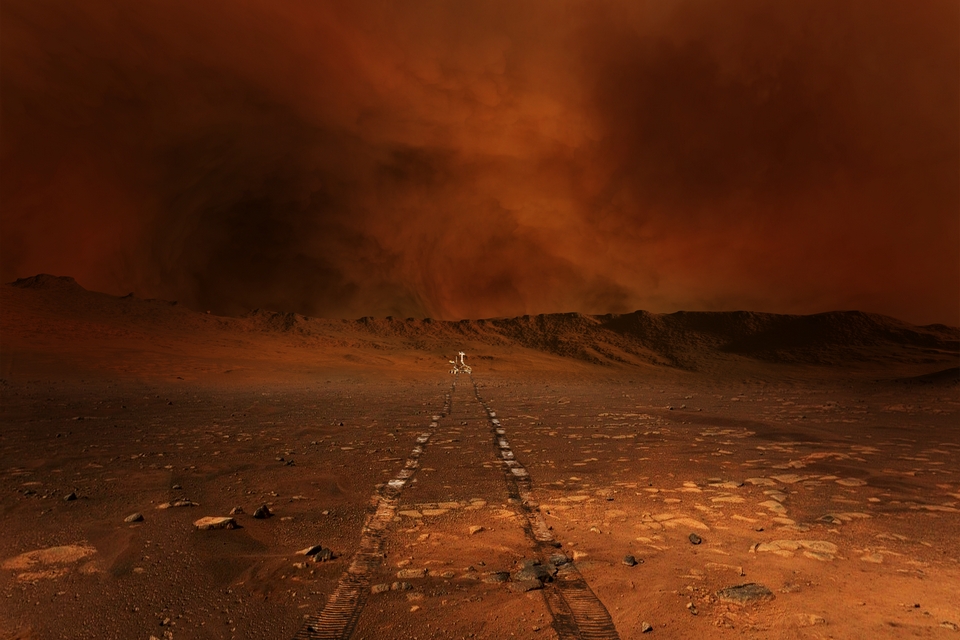
The Mars Exploration Rover Program
In 1997, NASA deployed the Mars Pathfinder mission to the Red Planet. Along with the lander, it included a 15-kilogram wheeled vehicle called Sojourner, which became the first-ever Mars rover in history.
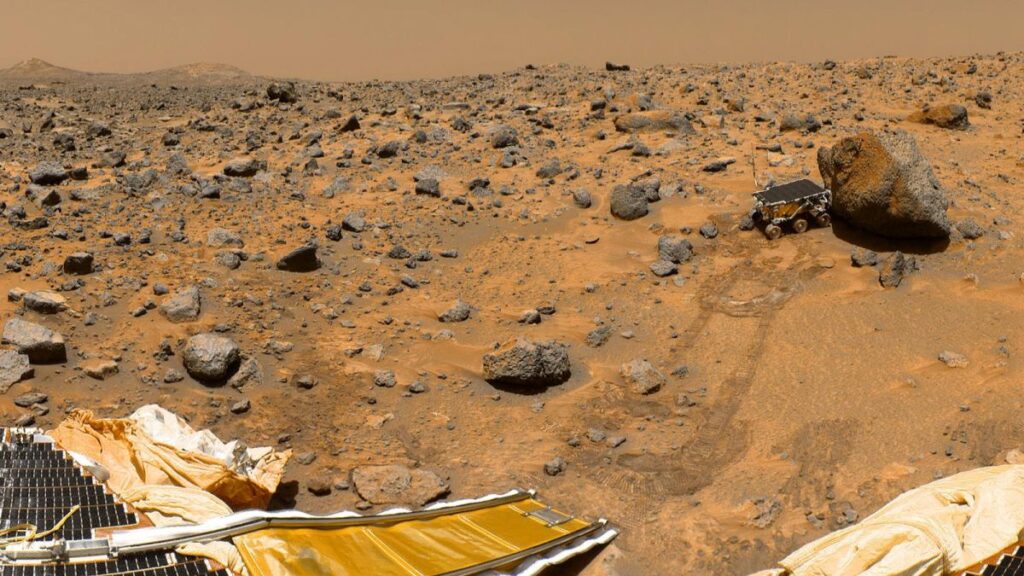
Despite an expected service life of seven days, the small rover operated for almost three months, covering a distance of approximately one hundred meters. Sojourner proved that autonomous vehicles could successfully engage in scientific research, thereby ushering in a new phase of Mars exploration.
Riding on the wave of this success, NASA embarked on developing a new program called Mars Exploration Rover, which aimed to comprehensively study the Red Planet using two identical rovers. They were named Spirit and Opportunity. Their primary objective was to investigate sedimentary deposits to confirm the hypothesis of Mars having had a full-fledged hydrosphere in the distant past, with rivers and permanent bodies of water on its surface.
Technical Features of Opportunity
Spirit and Opportunity shared nearly identical designs. They were equipped with six wheels and measured 1.6 meters in length, 2.3 meters in width, 1.5 meters in height, and weighed 185 kilograms.
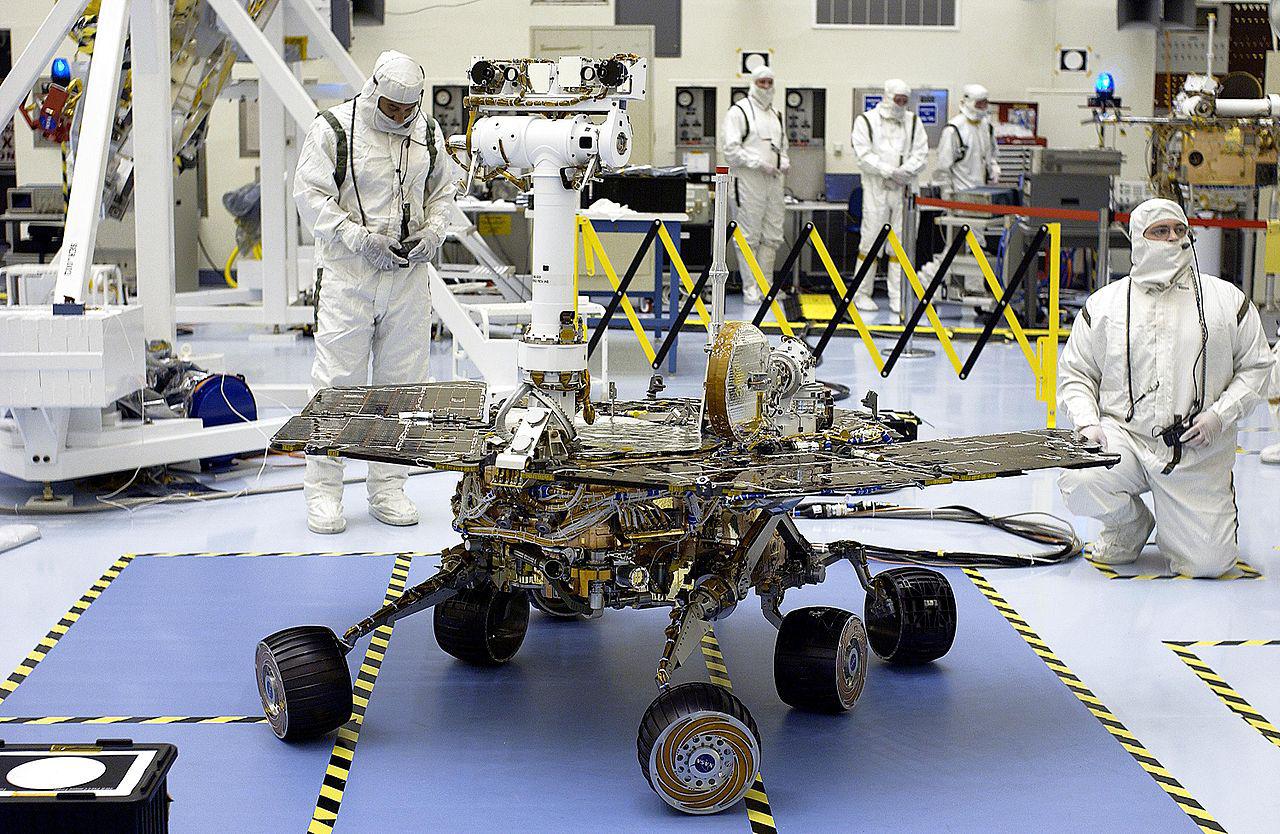
The scientific instrumentation of each rover included a set of cameras, several spectrometers mounted on a manipulator arm, a small drill, and a microscope. Solar panels were used to generate energy.
The onboard computer of the rovers was built around a 32-bit radiation-hardened RAD6000 processor, operating at a frequency of 20 MHz. It had 128 megabytes of RAM and 256 megabytes of flash memory.
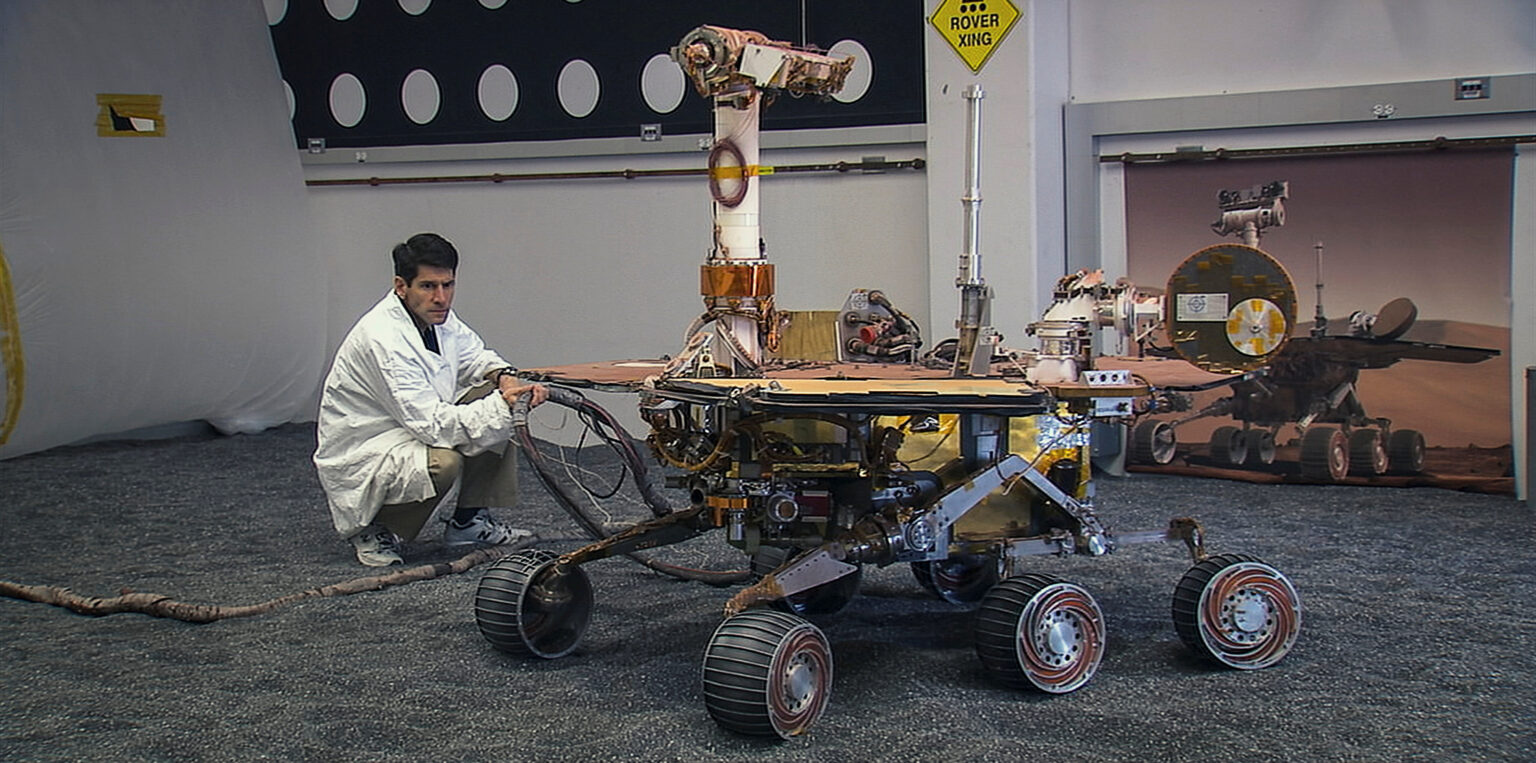
One of the key innovations of the mission was the autonomous navigation system, enabling the rovers to analyze the surrounding terrain and choose the safest route independently. They could also detect obstacles in their path and maneuver around them. This innovation allowed them to traverse greater distances than during manual navigation from Earth.
The Start of a Long Journey
The Spirit rover was launched on June 10, 2003. A month later, on July 7, 2003, Opportunity set off towards its destination. To ensure their safe landings on Mars, NASA utilized a combination of braking and descent parachutes, as well as engines and inflatable cushions.
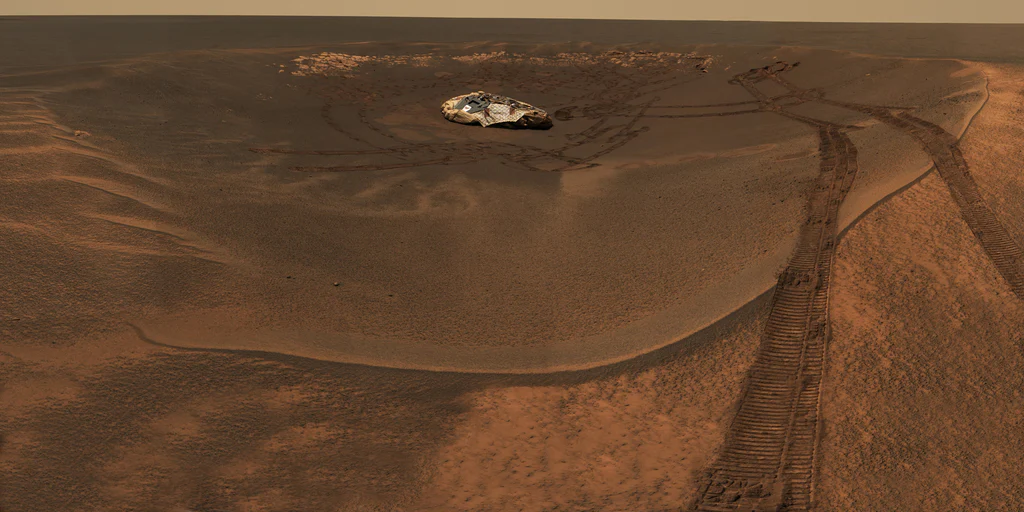
Opportunity touched down in the Eagle crater on January 25, 2004. After studying the soil and samples of local rocks, it began its journey. At that time, no one at NASA anticipated just how long the journey would turn out to be. The rover was designed for a 90-day mission, but in reality, it operated for 56 times longer.
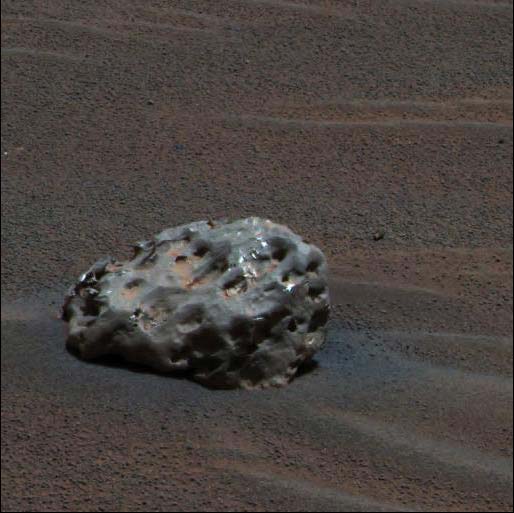
Initially, the rover traveled across the Meridiani Planum, visiting a series of small craters along its path. By 2011, it reached the rim of the 22-kilometer-wide Endeavour Crater, where it continued its mission by studying its surroundings.
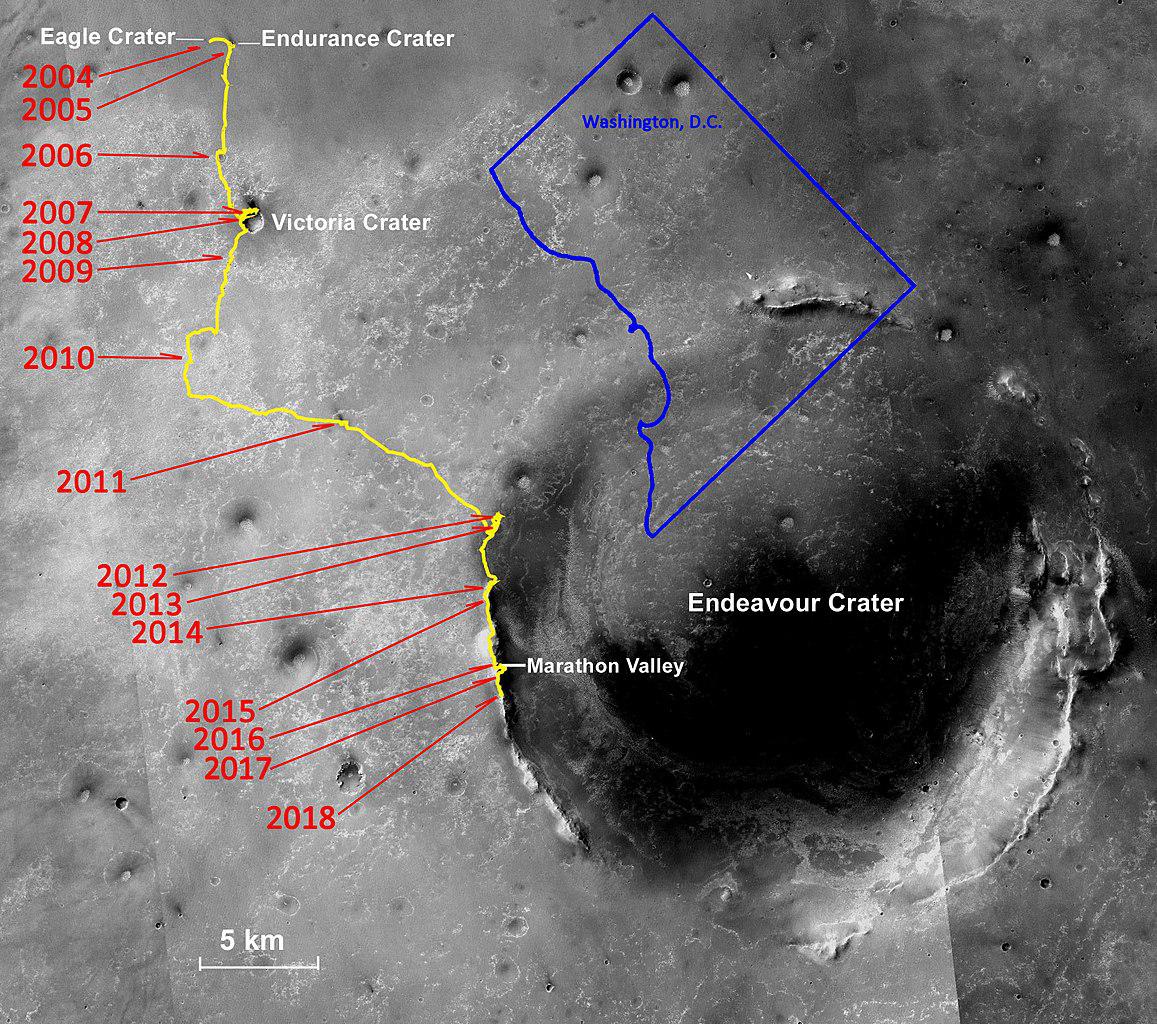
During its years of service, Opportunity explored numerous rocks and samples of Martian soil. The analysis of the collected data revealed minerals formed under the influence of liquid water. The rover transmitted a wealth of panoramic views of its surroundings back to Earth. It also managed to discover several meteorites and capture a series of fascinating atmospheric phenomena, including dust devils and periodically forming clouds on Mars, as well as transits of the moons Phobos and Deimos across the Sun’s disk.
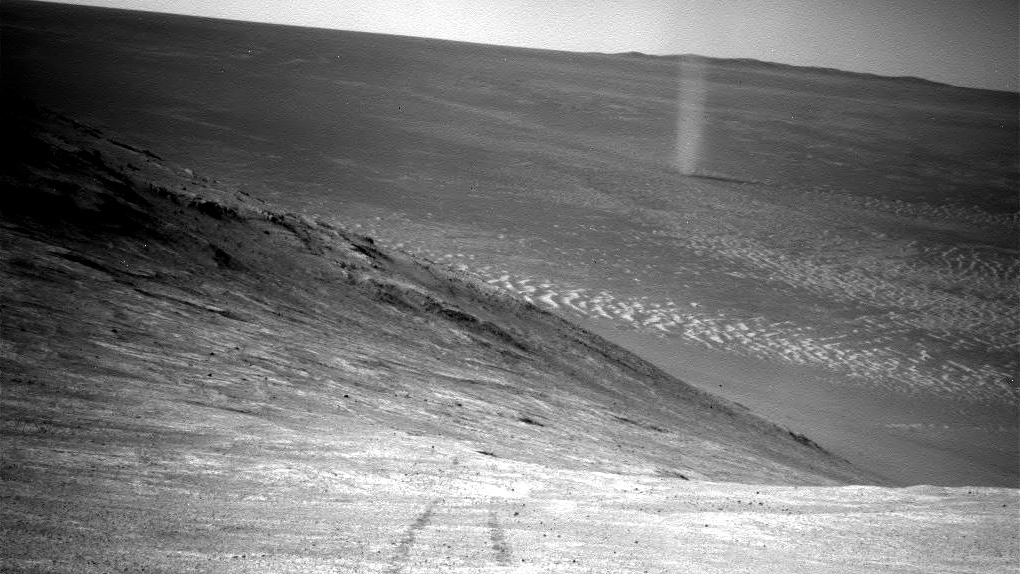
As we mentioned before, Opportunity was designed for a nominal mission duration of 90 days. Prior to the mission, experts speculated that its solar panels would quickly accumulate a thick layer of dust, hindering the rover’s continued operation. However, it turned out that the Martian wind, particularly the same dust devils, effectively cleaned the rover’s panels, allowing it to generate sufficient energy.
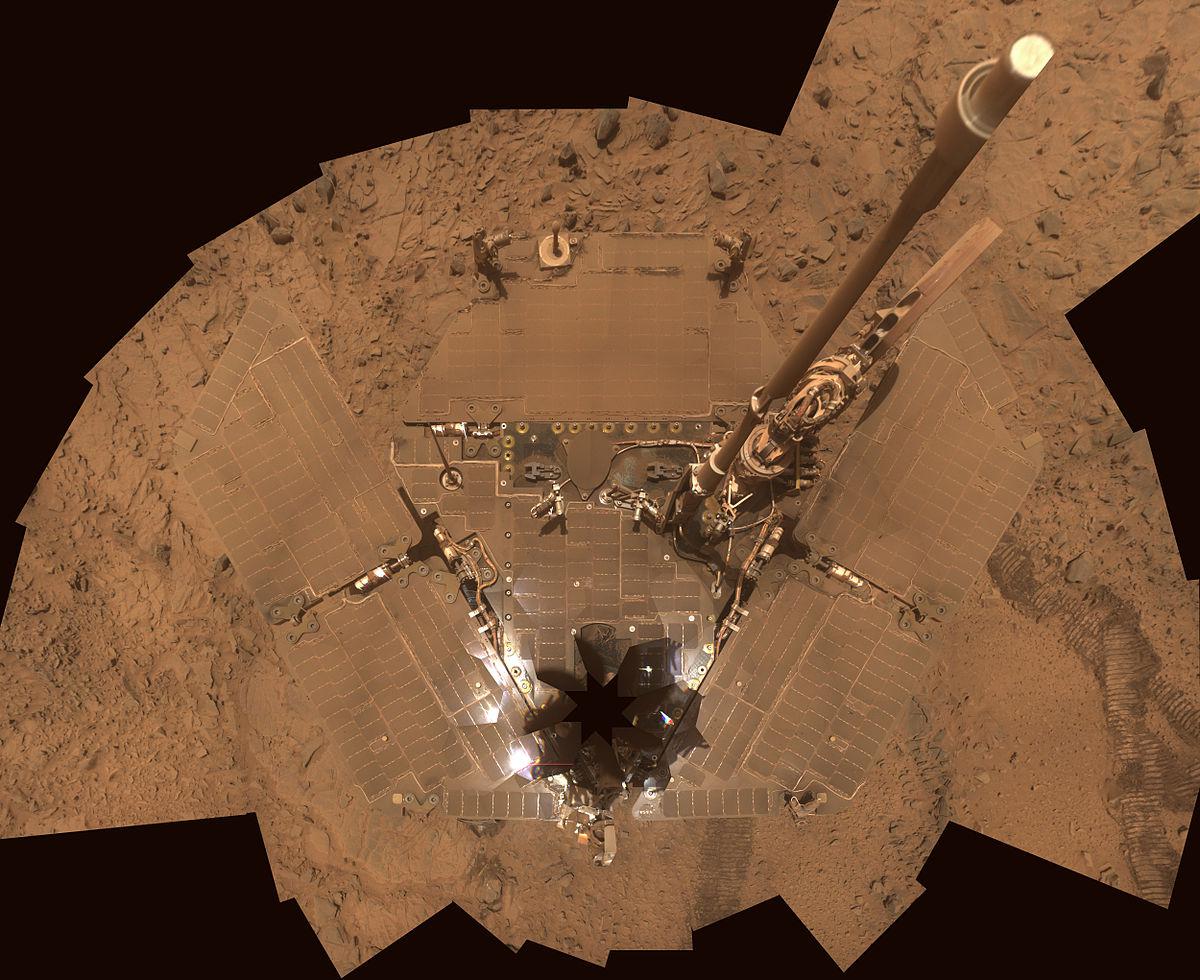
Another reason for the rover’s remarkable longevity was the favorable terrain and the successful route selection by the Opportunity team. As for its twin, Spirit, it became stuck in a small depression covered with a layer of salt in 2009 and was unable to free itself. Due to the unfavorable tilt angle, the vehicle received insufficient sunlight, leading to the freezing of its electronics during another Martian winter.
Technical issues of the mission
No technology can work forever, especially when it comes to a robot that is located on the surface of another planet and lacks the possibility of any servicing or repairs.
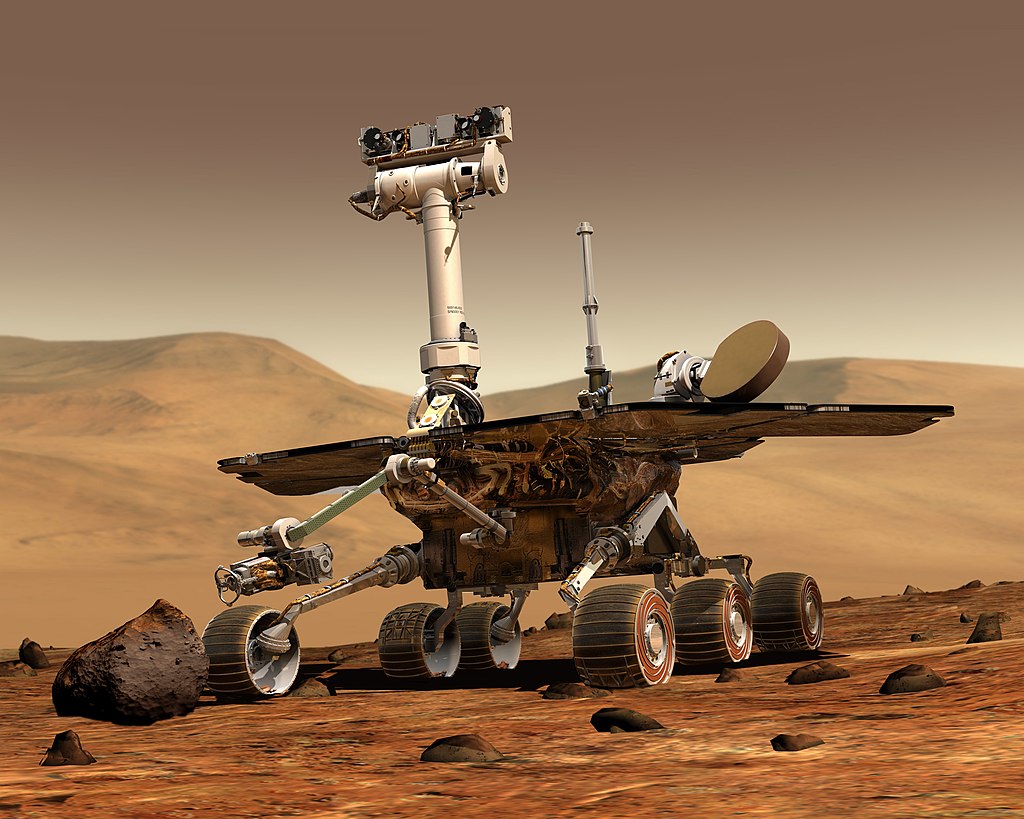
Therefore, it is not surprising that over the years of its service, Opportunity encountered a series of malfunctions and failures. Both spectrometers and one of the heaters malfunctioned, there were issues with flash memory and the drill, and due to damage to the front pair of wheels, engineers had to rely solely on the rear and middle wheels of the rover.
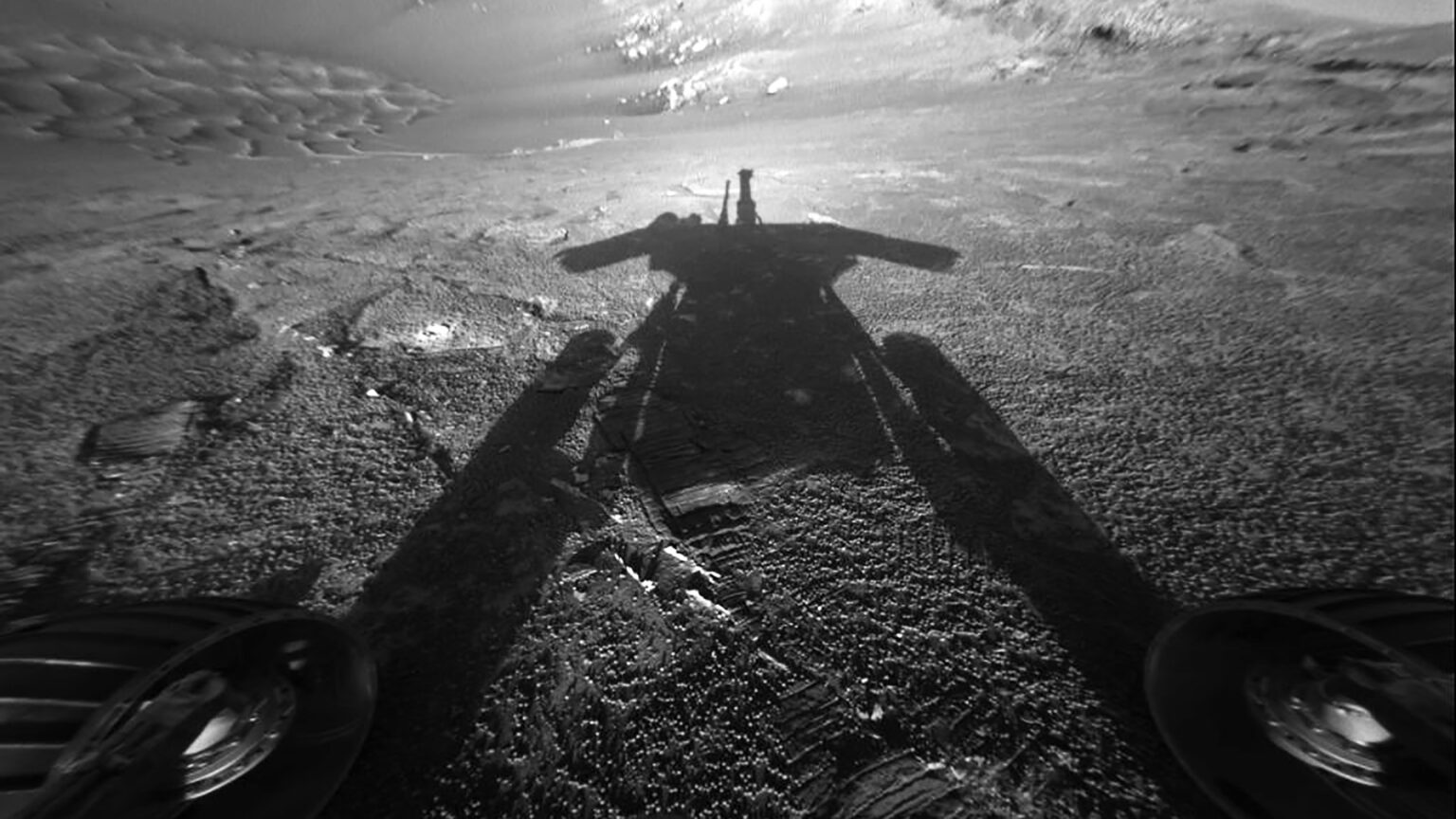
But despite all this, Opportunity refused to give up, and its journey continued. At some point, it essentially transformed into a testing laboratory, collecting data on the impact of Mars on its systems.
On March 25, 2015, NASA announced that Opportunity had traveled a distance of 41.195 kilometers on the Martian surface, making it a marathoner. It took the rover 11 years and 2 months to achieve this milestone.
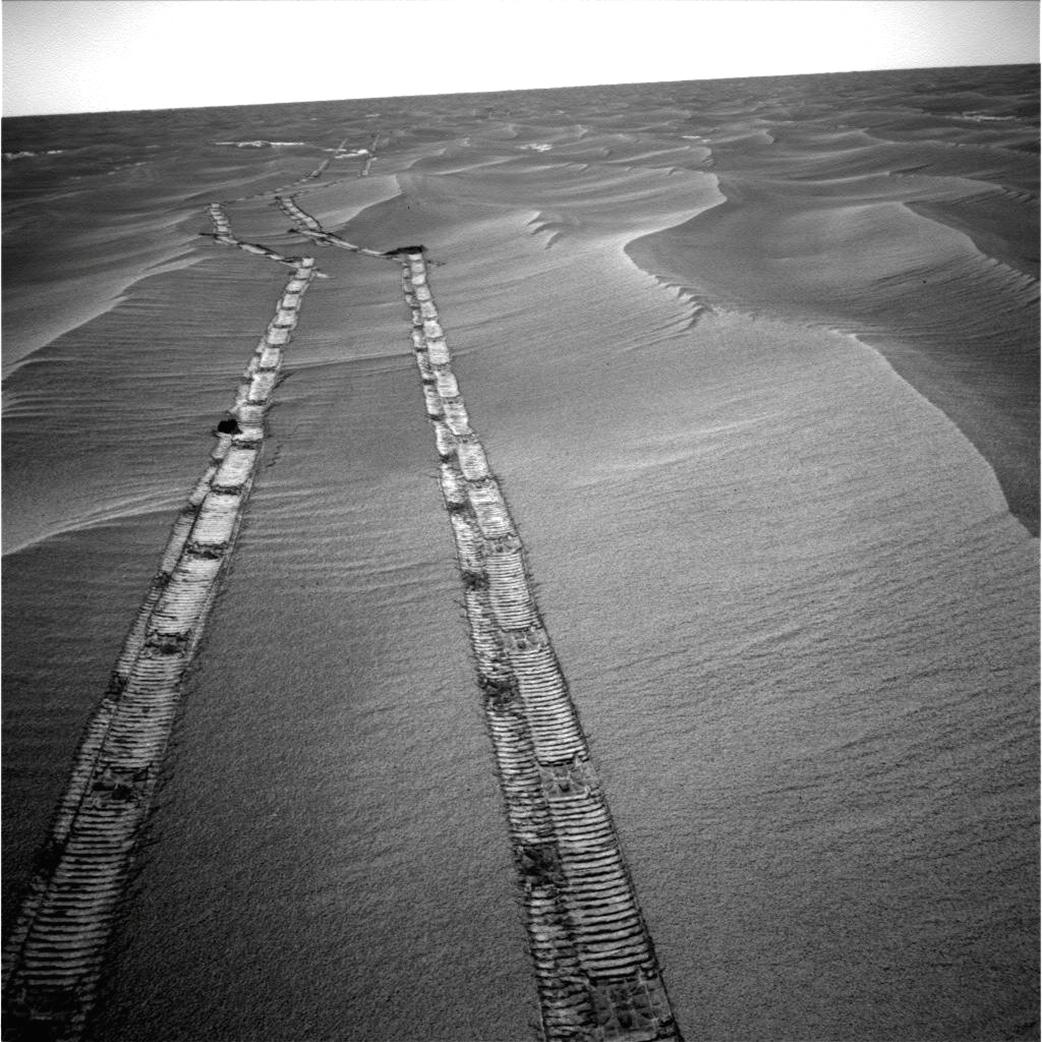
By the beginning of 2018, the rover began exploring Perseverance Valley, a channel carved by water flows that once ran down the inner slope of the Endeavour Crater billions of years ago. Many planetary scientists predicted the onset of dust storms on Mars in that year. However, the mission team hoped that Opportunity would cope with them. After all, in 2007, the rover successfully endured a similar test. Unfortunately, this time luck was not on its side.
The Loss of Opportunity
As scientists had predicted, a global dust storm did indeed begin on Mars in early June 2018. It quickly became apparent that its scale would far surpass the storm of 2007.
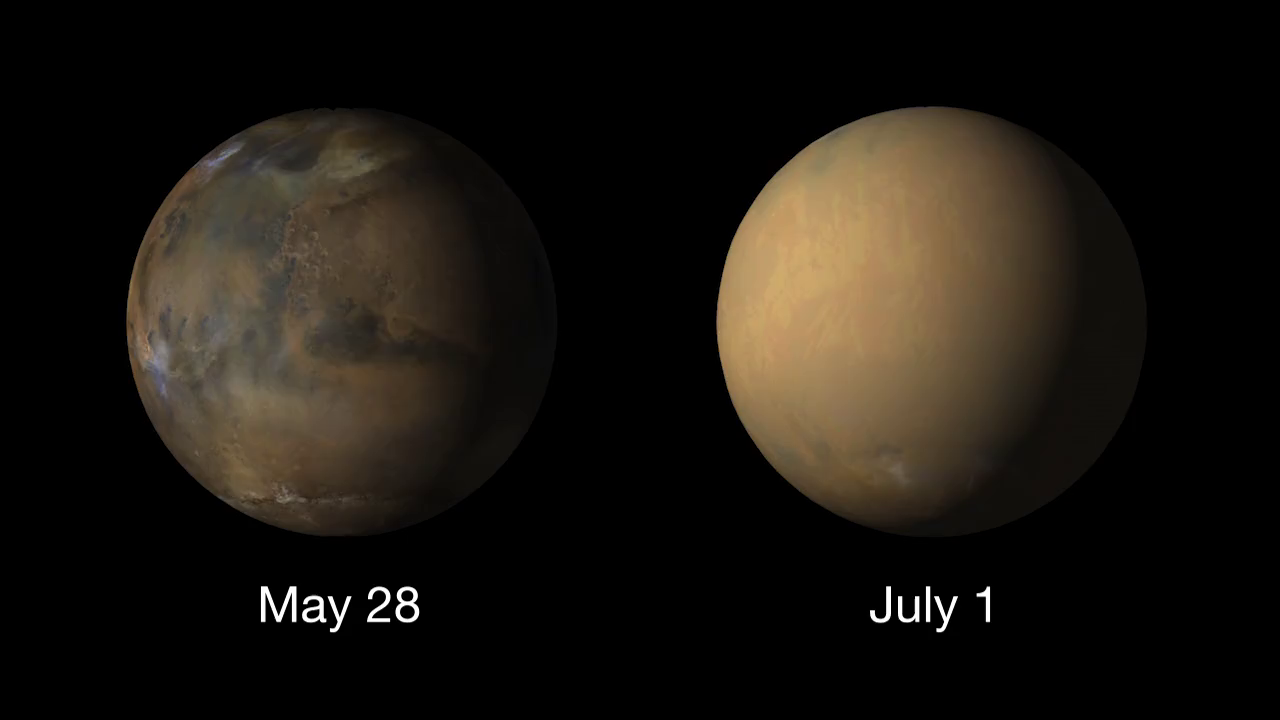
By June 6, the sky above Opportunity had become so dark that the rover no longer had enough energy to perform scientific operations and had to enter survival mode. On June 10, the rover transmitted its final image, as later understood.

The image depicted the sky, and its purpose was to determine the extent to which the dust storm affected the lighting conditions on the Martian surface. Numerous white specks on the image are camera noise caused by Opportunity capturing the very dark sky. According to the mission experts, at the time of imaging, the level of illumination was only 0.002% of the normal value. To an observer on Mars, it would have seemed like total darkness.

According to the legend, before the final loss of communication, the rover sent a message to Earth saying, “My battery is low and it’s getting dark.” Of course, in reality, the rover couldn’t say anything like that. However, this phrase accurately reflects its last data. Atmospheric opacity decreased, causing the amount of energy generated by the solar panels to diminish until it became insufficient to continue operations.
After the storm subsided, NASA made several attempts to contact Opportunity, but the rover never responded. Presumably, its electronics froze during the storm due to a lack of energy. On February 13, 2019, NASA officially announced the end of the Opportunity mission.
The Scientific Legacy of Opportunity
Opportunity left behind a very rich scientific legacy. Over its more than 14 years of operation, it transmitted over 217,000 images to Earth and traveled 45.16 kilometers across the surface of the Red Planet, setting an unbeaten record. The data collected significantly enriched scientists’ understanding of Mars and its past.
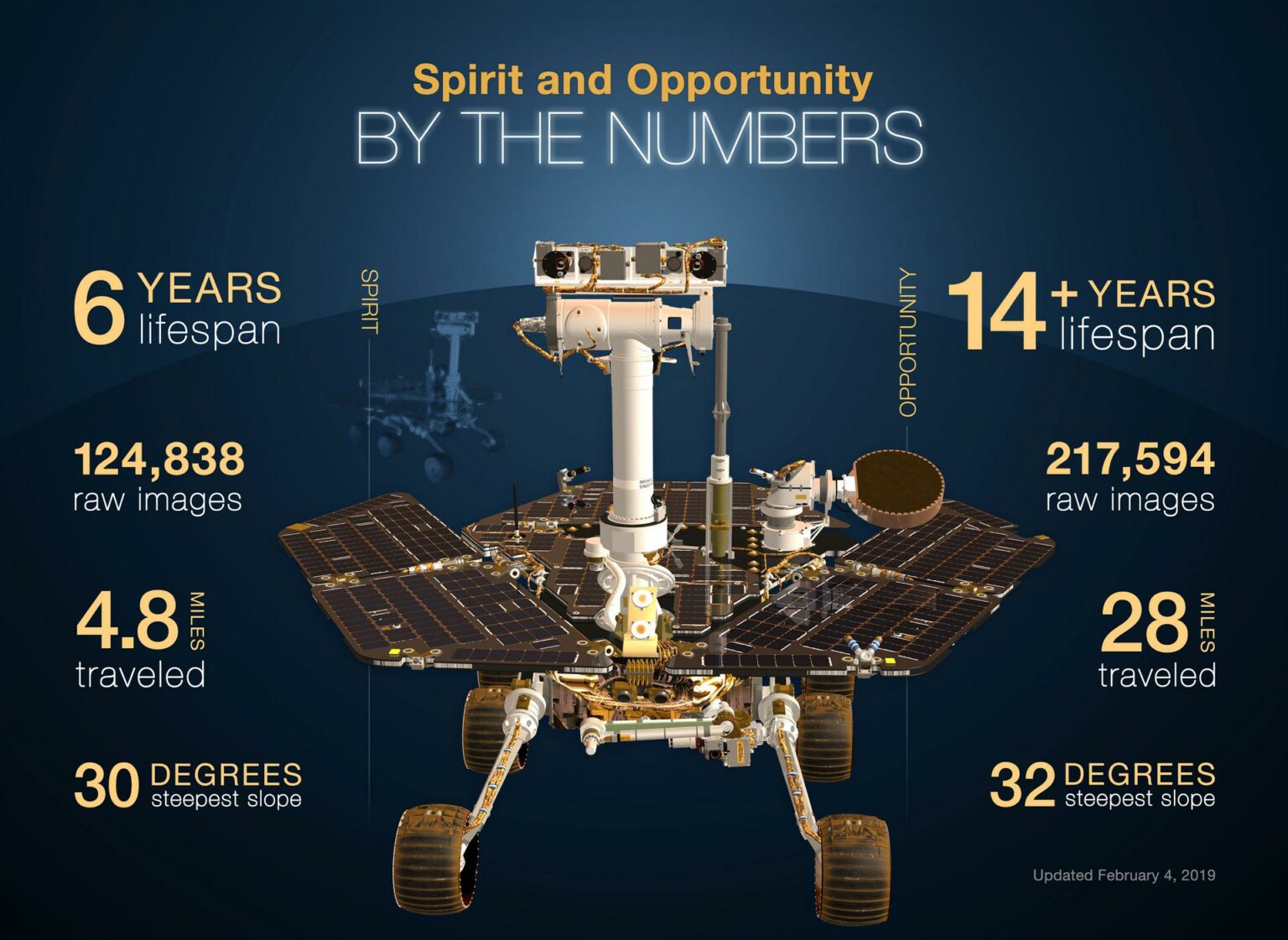
The remarkable resilience of Opportunity became a decisive factor that allowed NASA to embark on the construction of more sophisticated rovers like Curiosity and Perseverance. It can be said that the DNA of the rover, just like before, lives on in them.
To honor the rover’s contribution to the exploration of Mars, an asteroid was named Opportunity (39382). In 2022, a documentary film titled “Good Night Oppy” was released on Amazon Prime, dedicated to the history of the rover’s creation and its incredible journey. The film was created with the support of NASA’s Jet Propulsion Laboratory and the famous Industrial Light & Magic company. It received positive reviews from both critics and viewers.
